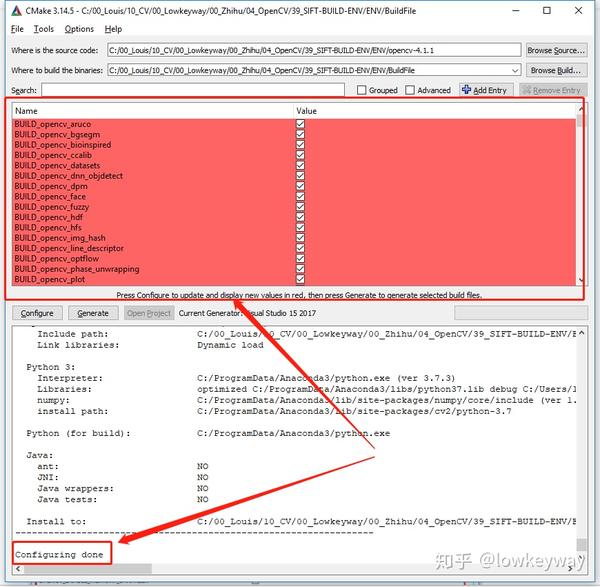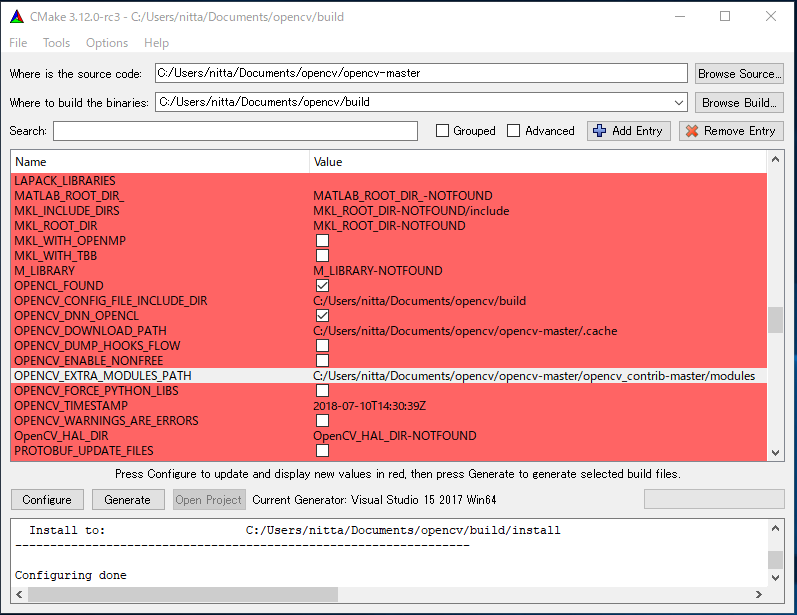
C++ flags (Debug): -fsigned-char -W -Wall -Werror=return-type -Werror=non-virtual-dtor -Werror=address -Werror=sequence-point -Wformat -Werror=format-security -Wmissing-declarations -Wundef -Winit-self -Wpointer-arith -Wshadow -Wsign-promo -Wuninitialized -Winit-self -Wsuggest-override -Wno-delete-non-virtual-dtor -Wno-comment -Wimplicit-fallthrough=3 -Wno-strict-overflow -fdiagnostics-show-option -pthread -fomit-frame-pointer -ffunction-sections -fdata-sections -fvisibility=hidden -fvisibility-inlines-hidden -g -O0 -DDEBUG -D_DEBUG C++ flags (Release): -fsigned-char -W -Wall -Werror=return-type -Werror=non-virtual-dtor -Werror=address -Werror=sequence-point -Wformat -Werror=format-security -Wmissing-declarations -Wundef -Winit-self -Wpointer-arith -Wshadow -Wsign-promo -Wuninitialized -Winit-self -Wsuggest-override -Wno-delete-non-virtual-dtor -Wno-comment -Wimplicit-fallthrough=3 -Wno-strict-overflow -fdiagnostics-show-option -pthread -fomit-frame-pointer -ffunction-sections -fdata-sections -fvisibility=hidden -fvisibility-inlines-hidden -O3 -DNDEBUG -DNDEBUG General configuration for OpenCV 4.3.0-dev =
Opencv cmake full#
Here is the full list of ARM CPU features, and the corresponding CMake options for OpenCV configuration: CPU FeatureĪRM Thumb instruction set is enabled by defaultĪRM VFPv3 floating point instructions extension You can significantly optimize OpenCV by letting it know more details of your hardware during the compilation. Your Raspberry may well support more than ARMv7 baseline.

Old Raspberry Pi 1 and Raspberry Pi Zero use older ARMv6 architecture and do not have much scope for acceleration. Each of them has different vectorization and optimization capabilities, and thus supports different instruction subsets.īy default, OpenCV uses ARMv7 instruction set as a minimal baseline - it is a modern architecture and enables the execution on a wide spectrum of hardware.
Opencv cmake code#
The optimized code often uses some specific hardware-related functions, or instructions sets: for example, Intel CPUs support SSE, AVX and other instruction sets, and ARM chips support VFP and NEON instructions.ĭifferent versions of Raspberry board are built with different generations of ARM chips. Most of its functions have different implementations for different processors: this way, the code can be specifically tuned to use the capabilities of the chips. Target hardware Raspberry 1B, 3 and 4 for experiments In addition, we provide some tips and tricks to optimize the library performance, dependencies, and build time.

We have tested the solution for Raspberry versions from 1 to 4.
Opencv cmake how to#
In this post, we will learn how to build the OpenCV library for Raspbian with native compiler on board and cross-compiler. That makes it a good choice for DIY computer vision projects. Raspberry Pi is a small ARM computer with a camera, a network controller, and Linux on board.


 0 kommentar(er)
0 kommentar(er)
